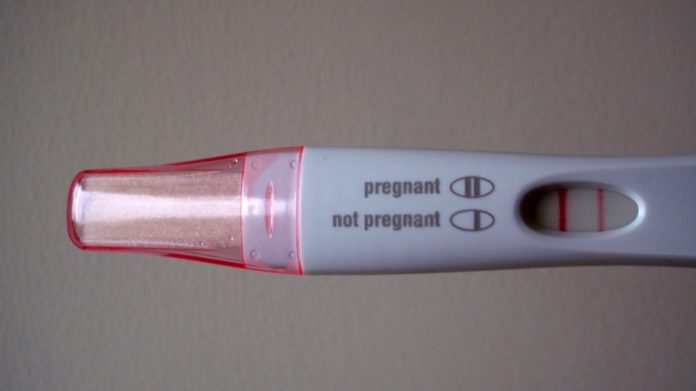Pregnancy test ‘tweaking’ is the latest trend for impatient parents

At-home pregnancy tests are usually the first — and nervous — steps in confirming or revoking a pregnancy suspicion.
Many over-the-counter urine tests, like Clearblue, advertise results as early as five or six days before a woman’s expected period. But waiting until the period is actually missed renders more accurate results, according to Planned Parenthood. Any earlier might show false results.
This sort of wait can be extremely frustrating. Some families are turning to online forums and Photoshopping to “tweak” and possibly enhance that faint second line, which indicates pregnancy on many of today’s at-home tests.
“‘Tweaking’ means to alter or enhance the test line to possibly make it clearer, something that the naked eye may not see,” a “Test Tweakers” board on a BabyCenter forum reads. The board recommends women use a digital camera on macro setting for the clearest photo.
There’s even an app called Early HPT+ to do the deed, for $1.99, or blog tutorials.
In reality, this method may bring up false results, thus, false hope or panic.

Brookma90’s unedited urine stick (left) compared to brookemeade’s edited version, which shows a faint line (right)
Most brands of urine tests work basically the same way — with an absorbing strip that detects pregnancy hormones. The body starts producing this hormone, known as human chorionic gonadotropin (hCG), once the embryo implants itself. It is detectable about 10 to 14 days after fertilization.
But even a faint line might not indicate accuracy.
“In general, we…look for the second line to be equal or greater in darkness,” Dr. Katherine Hsiao, chief of the division of gynecology at the California Pacific Medical Center in San Francisco, tells Mashable. Hsiao was stunned by the trend. She doubts any studies would actually validate this practice.
Further, it doesn’t account for dye run-off or pixelated images, which could distort any perceived results.
Even when appropriate time has passed, unclear results are common, and can depend on factors like urine dilution levels or waiting too long to check results.

Beyond inaccuracies, early pregnancy tests that are actually effective can register what’s known as chemical pregnancies, or very early miscarriages. These occur when the pregnancy hormone is technically detectable but the egg has not completed implantation. These miscarriages can go unnoticed, as women usually interpret them as heavy periods.
In fact, better and earlier detection has led to an increase in reported miscarriages — rates are 22% higher now than the 1980s. Families are learning of pregnancies and, therefore, previously undetected miscarriages earlier, according to the book Expecting Better by Emily Oster.
To avoid this emotional discovery, Hsiao would rather women consult their doctors and take a quantitative blood test in a laboratory, which can detect pregnancy up to 72 hours after conception.
Have something to add to this story? Share it in the comments.
